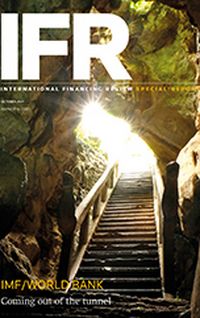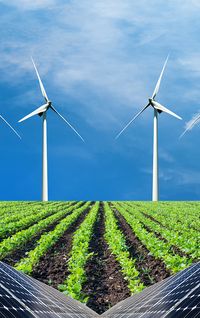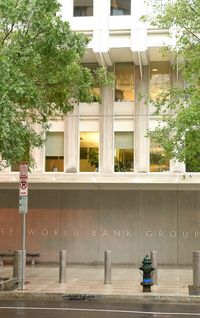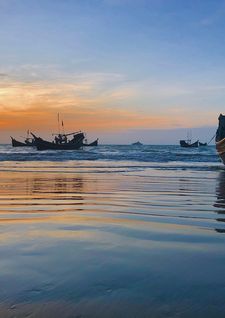The international community faces a race against time to donate their special drawing rights to poorer countries. But they want greater transparency before doing so
The International Monetary Fund’s disbursement of US$650bn of special drawing rights is a welcome and unprecedented step to help poor countries combat the economic aftermath of the coronavirus pandemic, but there are hurdles to overcome for it to be effectively deployed.
“The US$650bn injection for the balance sheets for all the countries in the world is substantial, more than tripling the total SDRs from about US$300bn to just under US$950bn,” said Mark Plant, chief operating officer of the Center for Global Development Europe.
“Put another way, IMF member countries have agreed as of August 23 to make up to 7% of the world’s US$12.7trn of reserves available to be shared as opposed to a ceiling of 2.4% now.”
The IMF’s largest ever distribution of monetary reserves in its history became effective on August 23, with proceeds going to all 190 member countries. But there remains an open debate about how SDRs could be used and whether they will succeed in their aim of easing the burden on low and middle-income countries (LMICs) wrought by the pandemic along with longer-term economic problems.
SDRs are the IMF’s unit of exchange, classed as reserve assets made up of US dollars, euros, yen, sterling and yuan. To spend them, countries must arrange an exchange for underlying currencies – for example, to pay debts to another country. They are intended to provide additional liquidity to lower-income countries, which lack the firepower to deploy the massive stimulus packages that advanced economies offered during the pandemic.
In 2020, developed countries spent an extra US$10trn on their own people but only US$6bn more in aid – and many spent less. This compares to a loss of US$2trn in economic output among emerging and low-income developing countries, according to CGD.
According to World Bank estimates, the Covid-19 pandemic pushed an additional 88 million to 115 million people into extreme poverty in 2020, with the total rising to as many as 150 million by 2021.
But the US$650bn package strongly favours rich countries because SDRs are allocated according to the size of the quotas countries pay to the IMF. While low and middle-income countries now have some breathing space on their balance sheets, their allocations are too low.
According to Plant, low-income developing countries received about US$21bn of SDRs, with middle-income emerging countries (excluding China) receiving a US$212bn boost to their reserves. The remaining US$433bn of SDRs went to advanced economies.
Uncharted territory
There is widespread agreement that all or some part of the advanced countries’ share of the new SDRs should be reallocated to needier ones.
The IMF’s allocation process cannot be changed easily, while the overall amount cannot be changed without the approval of US Congress, so the thorny issue of how to reallocate SDRs from rich countries, which do not need them, to low and middle-income ones must be resolved by the international community, led by the richest nations in the world.
In its meeting in April 2020, the G20 called on the IMF to present proposals to enhance transparency and accountability for the use of new SDRs while preserving their status as a reserve characteristic. It also called on the IMF to explore options to "channel SDRs on a voluntary basis to the benefit of vulnerable countries".
The principle is easy to accept but the devil lies in the detail.
“Rich countries should and could reallocate their SDRs but the question is how,” said Jim Barrineau, head of emerging markets debt at Schroders. “This is uncharted territory.”
That is because there are not yet structures in place to allow the reallocation of SDRs, and Plant says there are three technical constraints.
SDRs belong to individual countries rather than the IMF, so any decision on reallocation must be made at a national level. There is also a cost associated with transferring or reallocation. When a country uses (or donates) its SDRs, its holdings fall below its allocation, at which point it must pay interest on the difference. There is also a difference between lending and donating SDRs. A loan carries the risk of non-repayment and a donation results in a perpetual interest payment to the IMF. Both of these could affect the SDRs' status as a reserve asset characteristic. In addition, to lend or donate SDRs, most countries will require some kind of parliamentary approval.
Raft of proposals
One proposal is that richer countries lend their SDRs through the IMF’s Poverty Reduction and Growth Trust. The PRGT also provides zero-interest loans to low-income countries, but it currently covers only the poorest nations, so steps need to be taken to expand this to include all LMICs.
The IMF has called upon member countries to donate US$100bn of their SDRs – roughly a quarter of rich countries’ total allocation – to lower-income countries and is working on the creation of a new vehicle, called the Resiliency and Sustainability Trust, which allow countries to lend SDRs to middle-income countries with the specific aim of helping them combat climate change and improve their healthcare systems.
Critics fear using vehicles within the IMF could lead to delays in reallocation, given the fund’s strict lending criteria, and worry it will be tied to other relief programmes.
Another proposed method of reallocation could take place outside the IMF by using the 15 financial institutions that are prescribed holders of SDRs. These include four central banks, three intergovernmental monetary institutions and eight multilateral development banks (MDBs), including the World Bank. One proposal is that rich countries would lend SDRs to MDBs, which would then on-lend them to lower-income countries in a more targeted way.
But the reallocation cannot start until these details are agreed. According to Eric LeCompte, an adviser to the United Nations and executive director of Jubilee USA Network, timing is urgent.
“We need to see a stronger commitment from the G7 and G20 countries to donate SDRs and we need the vehicles and processes to enable donations to be put in place quickly. This needs to be done by the end of 2021. In fact, we needed it to be done yesterday,” he said.
There are concerns that for rich countries to reallocate their SDRs, they may look to place constraints on the use of proceeds to a series of tightly defined initiatives, for example to purchase Covid-19 vaccines, preventing countries from using them to buy up foreign exchange reserves.
“The US$650bn is a huge step in the right direction, but the total relief packages needs to be around US$1trn to meet the UN’s sustainable development goals. The rest could come from financing and aid packages, along with debt relief from G20 countries,” said LeCompte.
LMICs put SDRs to work
Meanwhile, LMICs have already begun looking at ways to deploy their SDR allocations. On September 22, Argentina became the first country to spend some of its new allocation when it made a US$1.9bn capital payment from its SDRs to the IMF as part of its plan to reduce its US$45bn debt pile.
Argentina’s SDR account at the fund is in deficit – as of August 31, it held US$3.4bn of SDRs against an allocation of US$5bn, so it is paying 0.05% interest per year on the difference. This interest obligation will grow when it uses more SDRs to pay more debt.
“In some sense they are “borrowing” to pay off the IMF debt – but the SDR interest rate is much lower than the interest rate on their IMF loan, so it makes some sense,” said Plant.
But Barrineau warned that “Argentina should be regarded as an isolated case. It is looking for a new deal with the IMF and this was made to meet a one-off payment. The world would not react well if this became standard practice".
In August, Mexico's sovereign bond spreads rallied when its president, Andres Manuel Lopez Obrador, said he would like to use the country’s US$12bn allocation to pay its outstanding debt. The problem is that the country's central bank, Banxico, invoked Mexican law that prohibits the use of reserve assets to pay debt.
Even where a country can use SDRs to buy foreign exchange reserves and stabilise its currency, this approach should be treated with caution.
“In the long term, investors will see that a country with dwindling foreign exchange reserves will have less available for an emergency,” said Barrineau.
Politics is also playing a part. The UK government has cut its overseas development aid budget and the Treasury is said to be considering using its SDR allocation as an alternative to providing foreign aid to needy countries. As things stand, there is no evidence of international leadership on the issue.
While there is overall consensus on the need to reallocate SDRs, they are not necessary a panacea against bigger macroeconomic headwinds. The anticipation of rising rates in the USA and the prospect of the US Treasury tapering its US$120bn-a-month asset purchase programme has sparked a bout of volatility, leading to investor and dollar outflows from emerging markets.
“Increasing the amount of SDRs cannot change that, said Barrineau.“It’s hard to see how SDRs could positively affect the economies of emerging markets other than on the margins. It's a good thing to have SDRs as a backstop, but the line from that to a better outlook for emerging market economies is far from a straight one.”
To see the digital version of this report, please click here
To purchase printed copies or a PDF of this report, please email gloria.balbastro@lseg.com





























